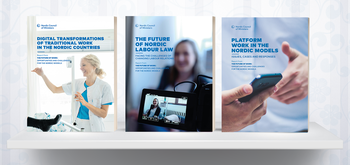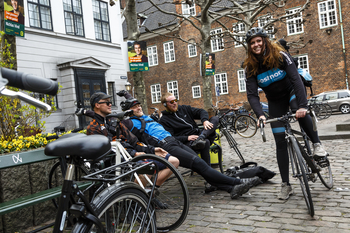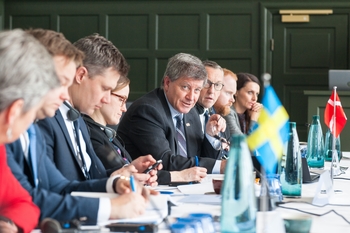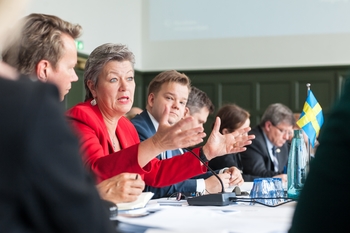Researchers warn of divided labour market: “The Nordic model needs to be strengthened”
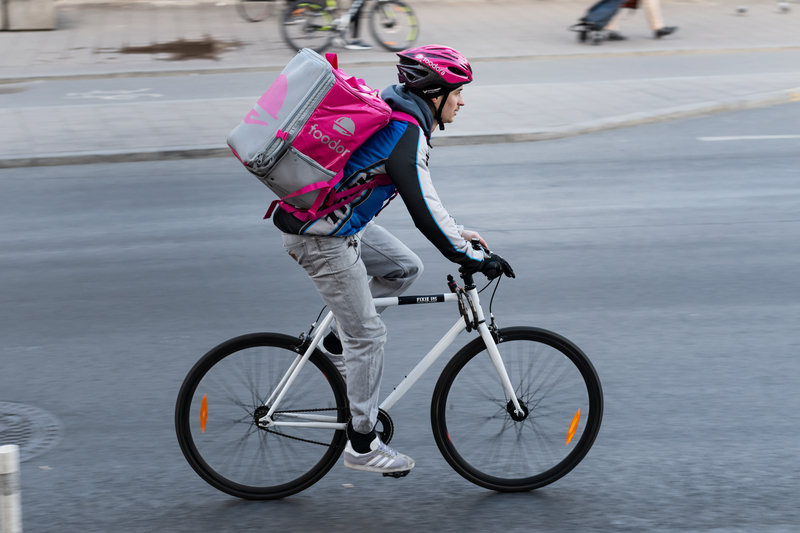
“There’s a risk that we’re heading towards a more divided labour market,” says Jon Erik Dølvik, who is leading the Nordic Council of Ministers’ major Nordic research project on the future of the labour market.
The project is now complete and the final report has been published. This is the culmination of four years of research with 30 researchers from eight Nordic universities.
The task has been to understand the structural changes that the Nordic labour market is facing as a result of digitalisation, the climate crisis, an ageing population, and globalisation.
Highlights four risks
The final report is not a list of concrete advice to Nordic labour market ministers, rather it is a call to action based on a series of warning signals highlighted by the researchers.
“There’s no predetermined path for the future of the labour market. There’s definitely scope for different opportunities. There’s both the time and space for adaptation and to counteract inequalities and knowledge gaps. The pandemic has illustrated that we’re robust and adaptable,” says Dølvik.
In the final report, the researchers highlight four risks to the Nordic labour market around the year 2030.
This is how Dølvik comments on them:
1. Risk of labour shortages
The proportion of people of working age is falling in the Nordic Region as it is in the rest of the world. At the same time, there is a growing need for labour in the social and elderly care sectors.
“The Nordic Region needs to mobilise its labour reserves, i.e. more of the 20 to 25 percent of people who are not currently in work. This group consists mostly of people with reduced working capacity with only elementary school education, women in part-time work, the elderly, and immigrants. This group is difficult to mobilise with many different measures required including work training, internships, and a better work environment. Many immigrants have got jobs in elderly care,” says Dølvik.
2. Risk of job shortages
The researchers conclude that digitalisation over the past 30 years has not resulted in lower levels of job growth in the Nordic Region, taking the edge off the more drastic future scenarios.
“It seems quite clear that the Nordic Region is a winner when it comes to digitalisation, and that the Nordic model has been part of the solution,” says Dølvik.
Jobs that have disappeared in industry have been replaced by jobs in the service sector, in which four out of five Nordic people now work. But if the service sector is to continue generating jobs, consumers need increased purchasing power and there needs to be more investment in new jobs, which the Nordic model has solved by way of redistribution policies.
“The challenge here is more about policy than technology. As the countries’ tax bases are eroded, new international measures are required. Initiatives to tax big tech companies and the introduction of global corporation tax floors are now on the agenda in the EU and at the OECD. This is very positive for the Nordic Region, which has a large public sector.”
3. Risk of knowledge gaps and high thresholds for jobs
International research has warned that technological developments could lead to a polarised labour market, where only jobs with high skills requirements and so-called simple jobs remain, while the middle layer disappears.
In the Nordic Region, however, the trend seems to be fewer simple jobs and more jobs that require vocational training or higher education.
“It’s good news that we’re getting more interesting and demanding jobs. This is a development that has benefited highly educated women over the past two decades. However, this also means that entry-level jobs are disappearing for groups that find it difficult to enter the labour market. This has affected men in particular, with many dropping out of the labour market due to polarisation and increased competition for simple jobs. If the labour market parties do not succeed in improving retraining opportunities and increasing knowledge, we will see wider gaps in Nordic labour markets,” says Dølvik.
4. Risk of inequality and exclusion
Researchers are seeing clear signs that the Nordic Region is shifting towards a more divided labour market. Increased differences in wages and employment, and the emergence of new, more insecure forms of employment have been going on for some time. These could accelerate after the coronavirus crisis, with the service sector hit especially hard.
“People delivering pizzas on bikes, for example, fall outside of the labour and welfare model. The proportion of Nordic people with atypical employment has admittedly remained stable during the 2000s, but we’re seeing a growing minority who, for various reasons, end up permanently outside contract and safety-net systems. We’re warning against this. If these gaps widen, trust and equality will be threatened. In other words, the very foundation of the Nordic Region’s ability to cope with change and crises will be affected.”
The conclusion is that the cornerstones of the Nordic labour market model need to be reinforced and renewed. Not least, more tools are needed in order to prevent segregation. Legislation and agreements need to be tailored to more volatile labour market relations so that, for example, platform workers gain access to safety-net systems.
Greater risk of crises
The labour market megatrends of globalisation, climate change, and technological development are resulting in a faster pace of change and a greater risk of crises.
Skills development will then be crucial if people are to retrain and change jobs, the researchers write. A policy for lifelong learning should therefore be given the highest priority, also to cater for the skills requirements of the green transition.
More people understand the value
Dølvik believes that the pandemic has raised awareness of the Nordic model among many Nordic people:
The importance of community, security, and equal treatment. The role of the parties in safeguarding jobs and incomes. The vital role of care workers and cleaners in society, but with incomes that are too low.
“We’ve been able to include this case study directly in our research project on the future of the Nordic model. The pandemic has increased social awareness and support for our model,” says Dølvik.
